Based on "The Journals of Zebulon Montgomery Pike" which were published shortly after the explorer returned to the United States and were a popular sensation at the time, this 1 hour semi-documentary follows the small troop of American soldiers as they encounter Native Americans, search for the headwaters of the Red River and eventually encounter Spanish forces.
As Pike wrote “Although they are a Dam’d set of Rascals, yet in the Woods they are staunch fellows and very proper for such expeditions as I am engaged in.”
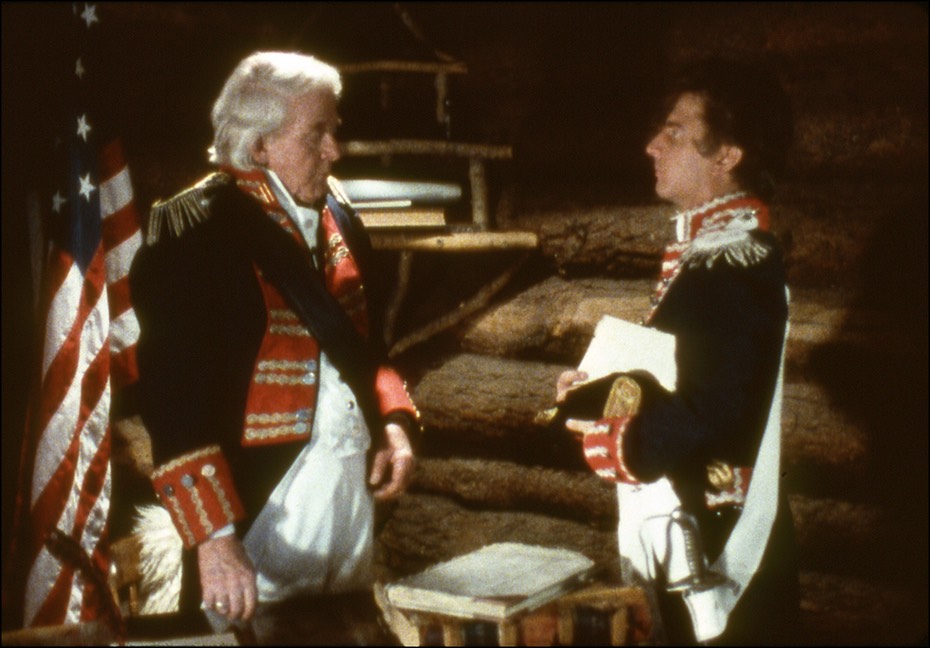
General James Wilkinson, Senior Officer of the U.S. Army, was a suspect historical character, but he looked with favor on young Pike and assigned him to lead the Mississippi expedition.
The film delves into not only Pike, but also the courageous men like Doctor John Robinson and Antoine F. Baronet Vasquez known as “Baroney" who accompanied him on this dangerous and historic expedition.
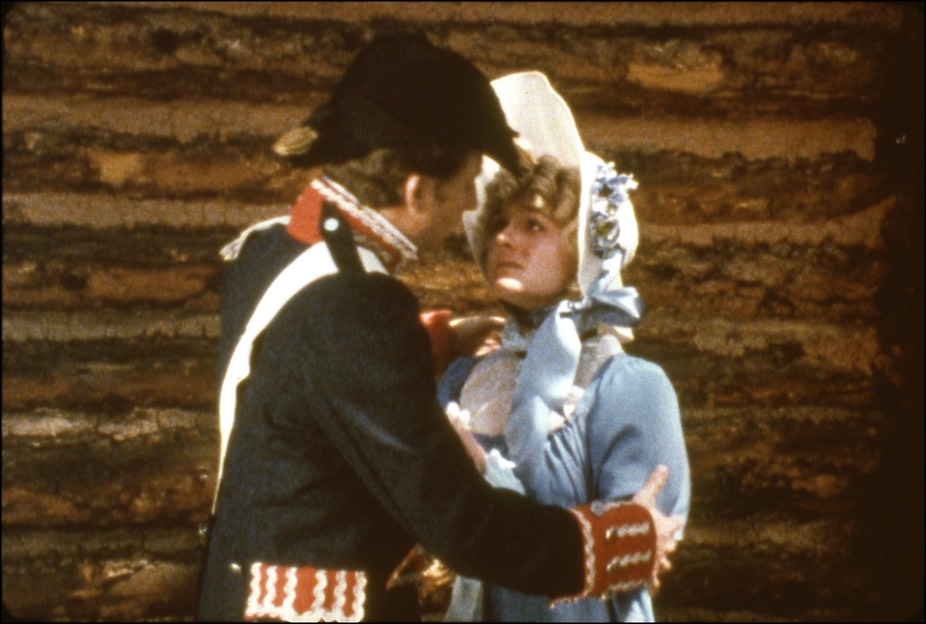
The film sets this very human story of exploration into the current state of affairs of its time in American History.
Two hundred years ago, what began as the 27 year old Lieutenant’s second grand adventure soon became an ordeal of survival in the savage winter snows.
Photographed where these events happened, in the same severe weather conditions the expedition encountered.
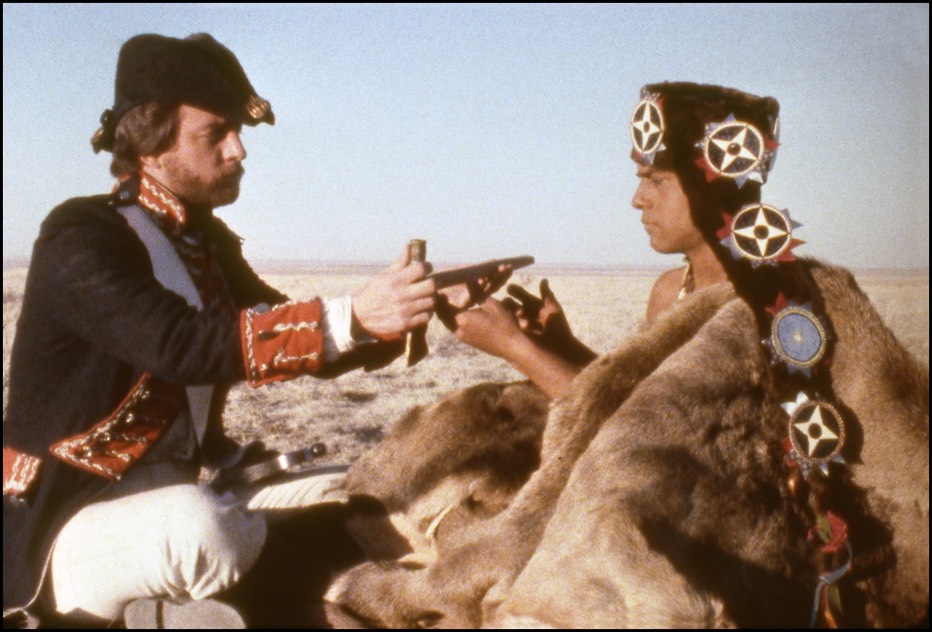
The film focuses on some of Pike’s encounters with these tribes and documents why and how Pike attempted to climb “the blue mountain", which decades later, during the Colorado Gold Rush, became famous as "Pikes Peak” as it was the first beacon that the long months traveling across the vast plains were nearly at an end.
Created with the advisement of experts including Pike biographer W. Eugene Hollon (author of “The Lost Pathfinder”), the military information came from James Kochan, the U.S. Army Historian (for the period 1783 to 1830), and Donald E. Kloster, the Smithsonian’s Curator of Military History who provided the original plans for Pike’s rare uniforms and equipment along with information on the Indian tribes and the archaic Grand Pawnee language which Pike encountered.
Pike’s uniforms were a transitional uniform between those of the Revolutionary War and that of the War of 1812. Before "Zebulon Pike and the Blue Mountain" these uniforms existed only as patterns in the National Archives, now one of our uniforms is in the Smithsonian's collection.
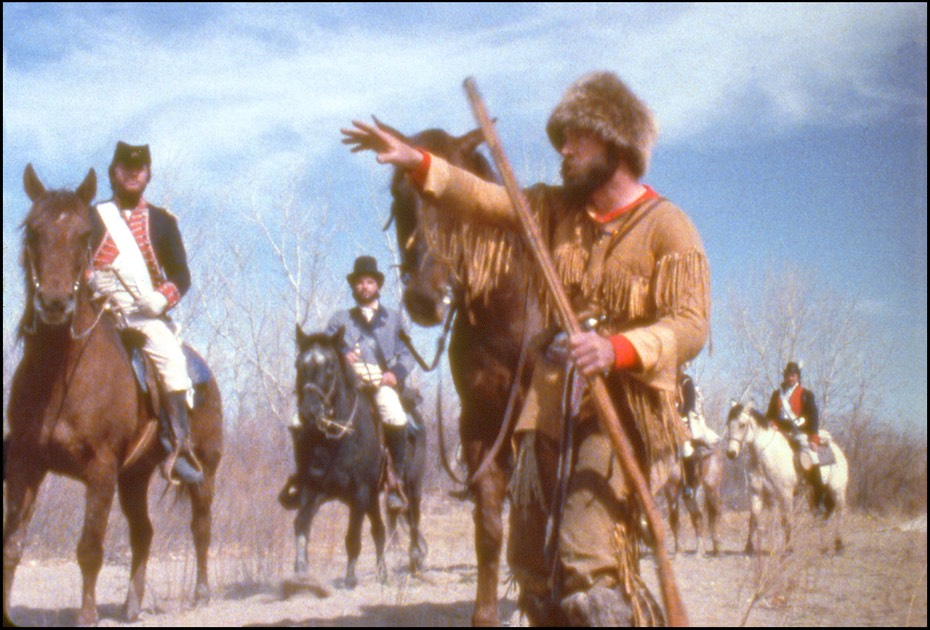
Masterly narrated by Burgess Meredith with a sweeping musical score composed by Neil Argo, which was performed by the Denver Symphony, "Zebulon Pike and the Blue Mountain" is 1 hour in length and now available on DVD below.
—————————————————
"'Zebulon Pike and the Blue Mountain' is the premier film production on Pike's amazing exploits, and I have no doubt that it will remain a standard in the future."
Clive G. Siegle,
Executive Director Zebulon Pike Bicentennial Commission
—————————————————
Pike’s expeditions were characteristic of what most of this country’s explorers often experienced, that being very difficult, often unforeseen, and frequently life-threatening situations for which no one is ever fully prepared.
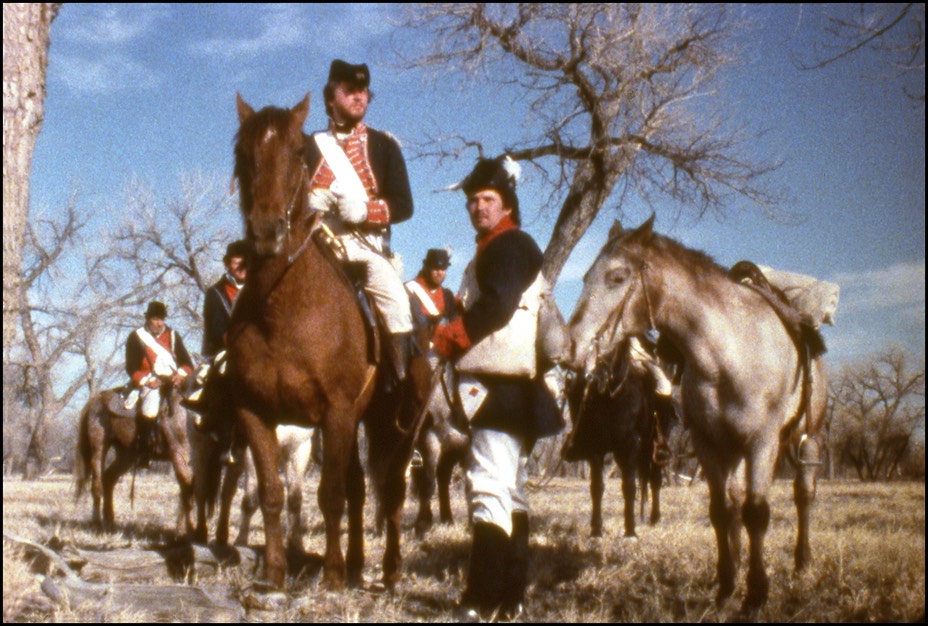
Pike knew the Spanish were in the area and wrote “Passed two Spanish camps, within three miles of each other. . . This caused us to move with caution; but at the same time, increased our anxiety to discover them."
Pike wrote “At two o’clock in the afternoon I thought I could distinguish a mountain to our right, which appeared like a small cloud; viewed it with the spy glass, and was still more confirmed in my conjecture. In half an hour, they appeared in full view before us. When our small party arrived on a hill they with one accord gave three cheers to the Mexican mountains."
Pike wrote of one of their Indian encounters “We found them to be sixty warriors . . . our party was sixteen total. In a short time they were arranged in a ring and I took my seat our colors were placed opposite each other, the utensils for smoking were paraded on a small seat before us; thus far all was well.”
—————————————————
"Pike entered what is now Colorado on Nov. 11, 1806, and for the next three months followed a tortuous route through Colorado’s river country, mountains, canyons and high valleys. It began as a grand adventure and turned into an ordeal as the expedition party was terribly unprepared for survival in the winter snow and cold."
The Mountain Mail Salida, Colorado
—————————————————
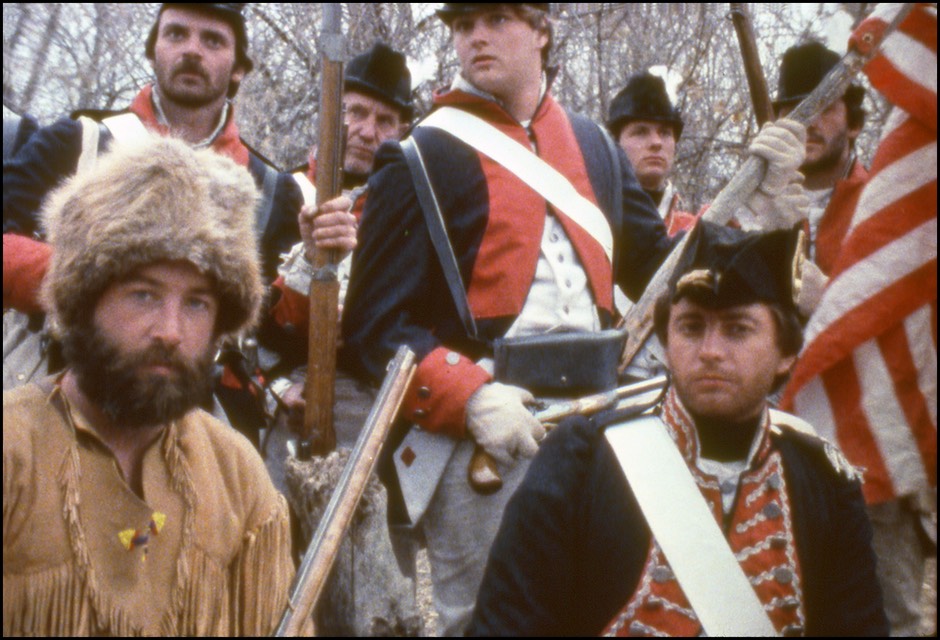
Made by Colorado native, Director John Henry Johnson who as a boy camping across Colorado often heard stories about Pike being in this valley or that area and wondered how this could have happened, years later the award-winning film "Zebulon Pike and the Blue Mountain" was the result.
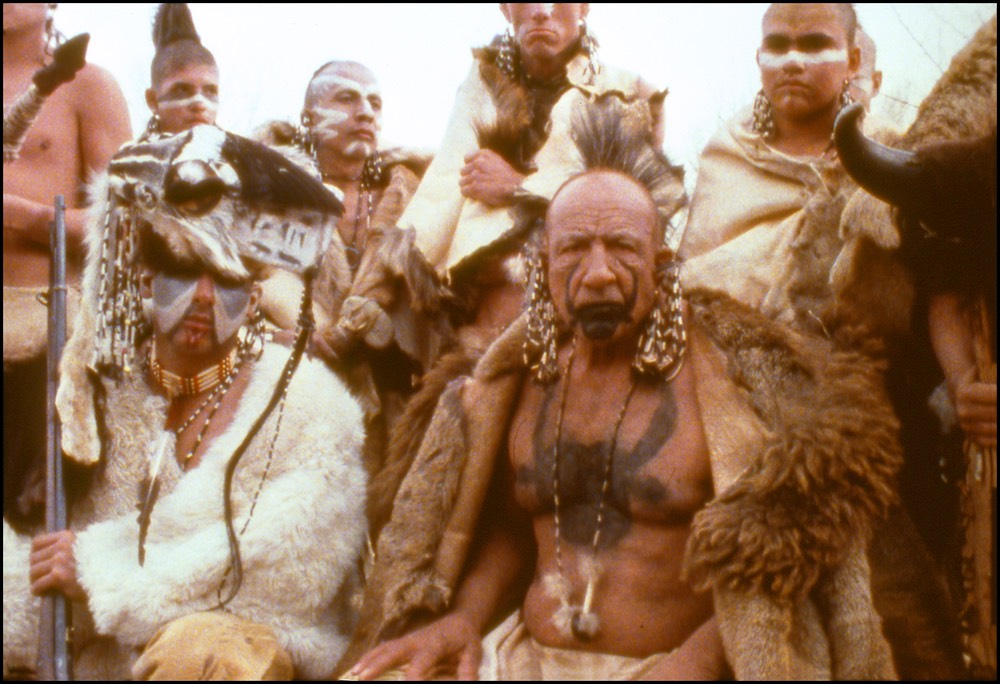
Native American clothing and facial makeup were directly patterned after images and drawings provided by Donald E. Kloster of the Smithsonian and from the paintings of George Catlin.
Pike built the first American structure constructed in Colorado and probably the first in the Louisiana Purchase.
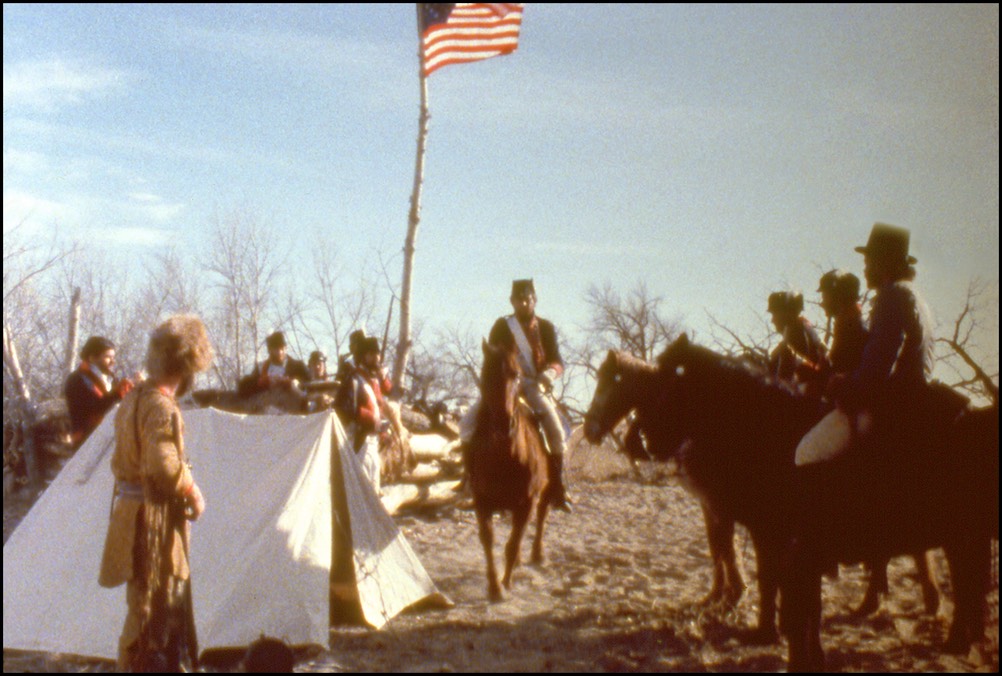
Pike wrote “I concluded to put my party in a defensible situation; and ascend the north fork, to the high point of the blue mountain, which we concluded would be one days march, in order to be enabled from its pinical, to lay down the various branches and positions of the country.”
—————————————————
"As arduous as the filming must have been . . . the end result is a feeling of this is Colorado as it really was nearly two centuries ago. When the soldiers get cold, the viewer gets cold; when Pike’s men hurt, we hurt."
Pueblo Chieftain
—————————————————
Pike wrote “The summit of Grand Peak, which was entirely bare of vegetation and covered with snow, now appeared at the distance of 15 to 16 miles from us, and as high as what we had ascended, and would have taken a whole day’s march to have arrived at its base, when I believe no human being could have ascended to its pinical.”
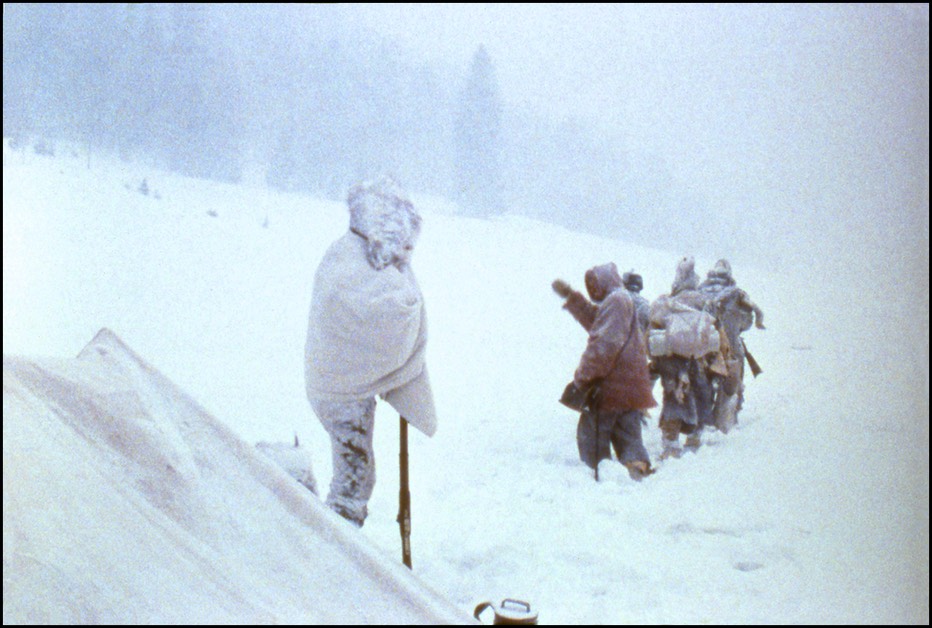
On Christmas Day 1806 Pike wrote “Here I must take the liberty of observing that in this situation, the harships and privations we underwent, were on this day brought more fully to our mind. Having been accoustomed to some degree of relaxation, and extra enjoyments; but here 800 miles from the frontiers of our country, in the most inclement season of the year; not one person clothed for the winter, many without blankets, having been obliged to cut them up for socks and now laying down at night on the snow or wet ground; one side burning whilst the other pierced with the cold wind.”
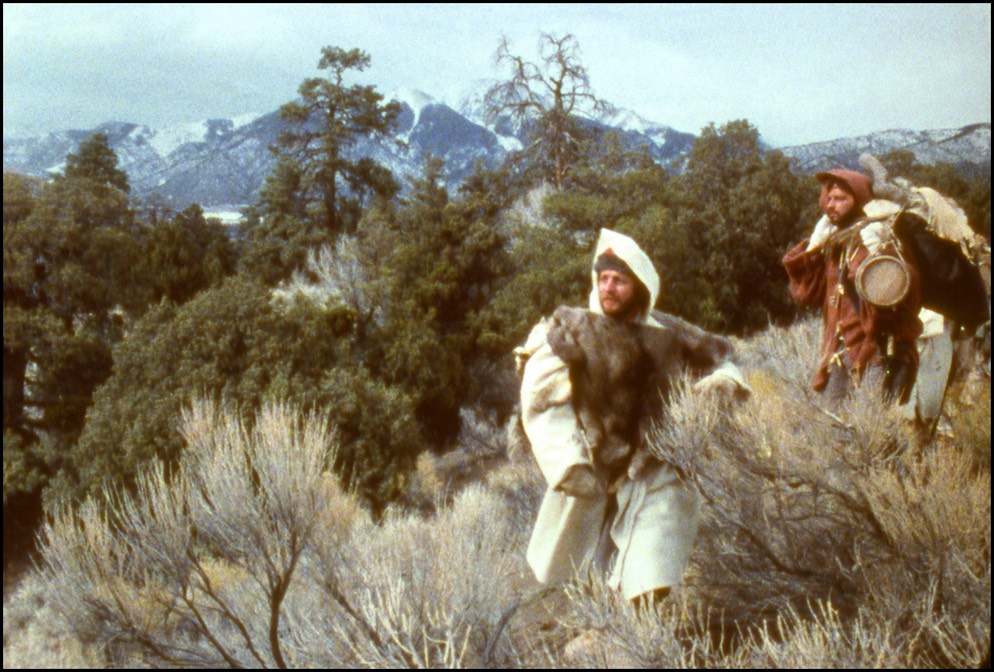
Pike wrote of the dunes in what is now the Great Sand Dunes National Park, “Their appearance was exactly that of the sea in a storm (except as to color) not the least sign of vegetation existing thereupon."
The filmmakers thank and are indebted to the many landowners who allowed the film crew access to the places where Pike and his men traveled.
More than 100 individuals, businesses and agencies helped ensure the film's rich authenticity. From rare firearms and costume detailing, to Pike’s hat itself, the filmmakers simply could not have made this window into a long-ago time period without their help.
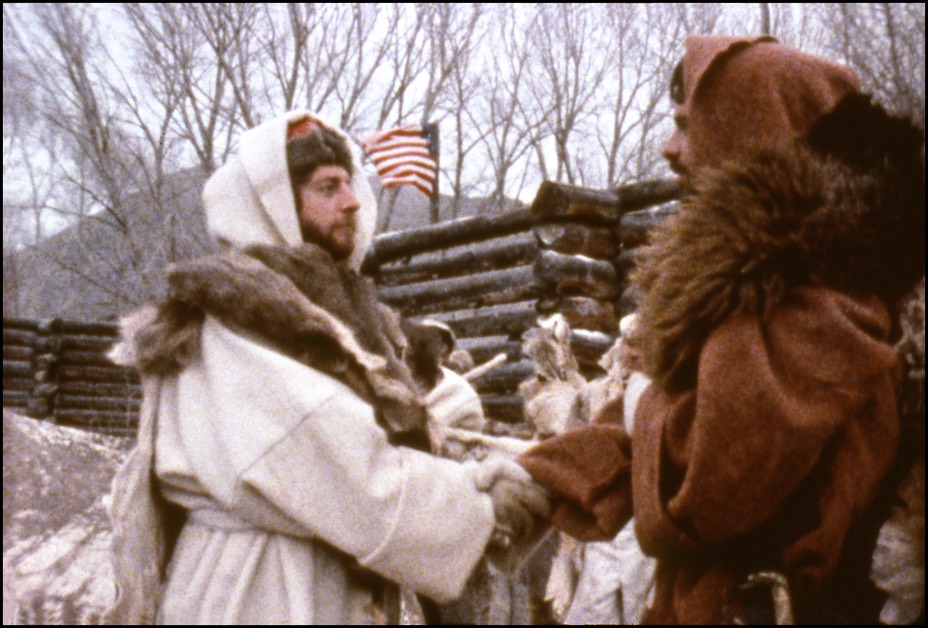
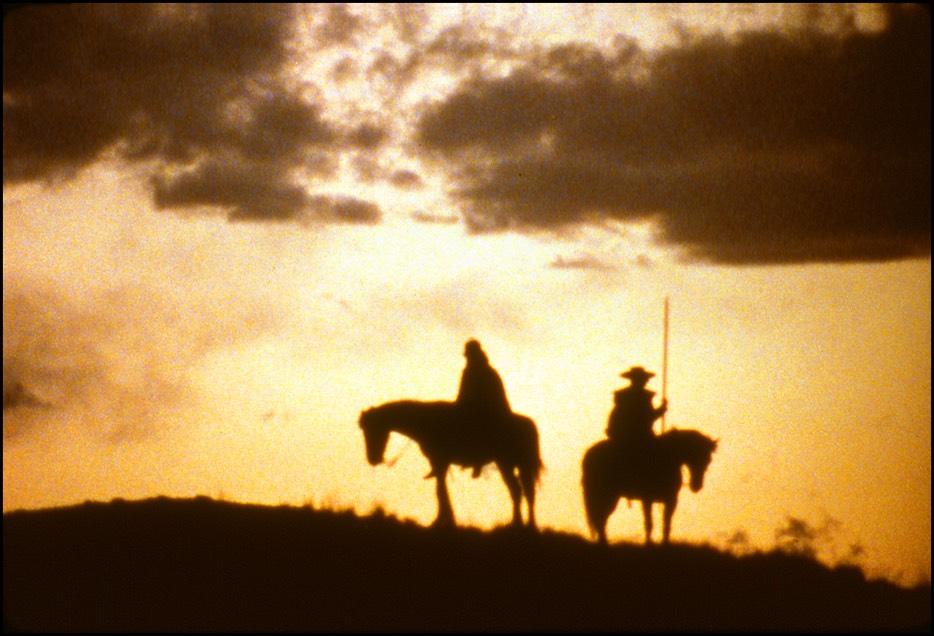
Of the first Spanish they encountered, Pike wrote “discovered two horsemen rising the summit of a hill . . . proved to be a Spanish dragoon and a civilized Indian . . . They informed me that was the fourth day since they had left Santa Fe; that Robinson had arrived there, and was received with great kindness by the governor.”
Though none of his men died during the expedition many lost fingers and toes to frostbite. Pike wrote “They endured thirst and famine; marched over rugged mountains, through snows three and four feet deep; their bodies exposed to every inclemency of weather, for want of clothes, carrying at the same time, packs of 60 to 70 pounds burden."
Secretary of War Henry Dearborn, on behalf of Thomas Jefferson wrote to Pike “You may rest assured that your services are held in high estimation by the President of the United States, and I consider the public much indebted to you for the judicious manner in which you have performed.”
—————————————————
Winner:
Council on lnternational Nontheatrical Events (CINE) Golden Eagle Award
Washington D.C.
Selected for its excellence to represent the United States in international motion picture events.
and
Winner:
Certificate of Commendation
American Association for State and Local History
Oakland, California
Sponsored by the Colorado Historical Society for the Certificate of Commendation Award because of its historical accuracy. The AASLH is the professional organization of museums and historians across America.
—————————————————
From multi-award-winning filmmaker John Henry Johnson ("Damon Runyon’s Pueblo" and "Curse of the Blue Lights"), "Zebulon Pike and the Blue Mountain" focuses on the young explorer and his men’s experiences as they face an unknown wilderness, its inhabitants and the terrible winter snows.
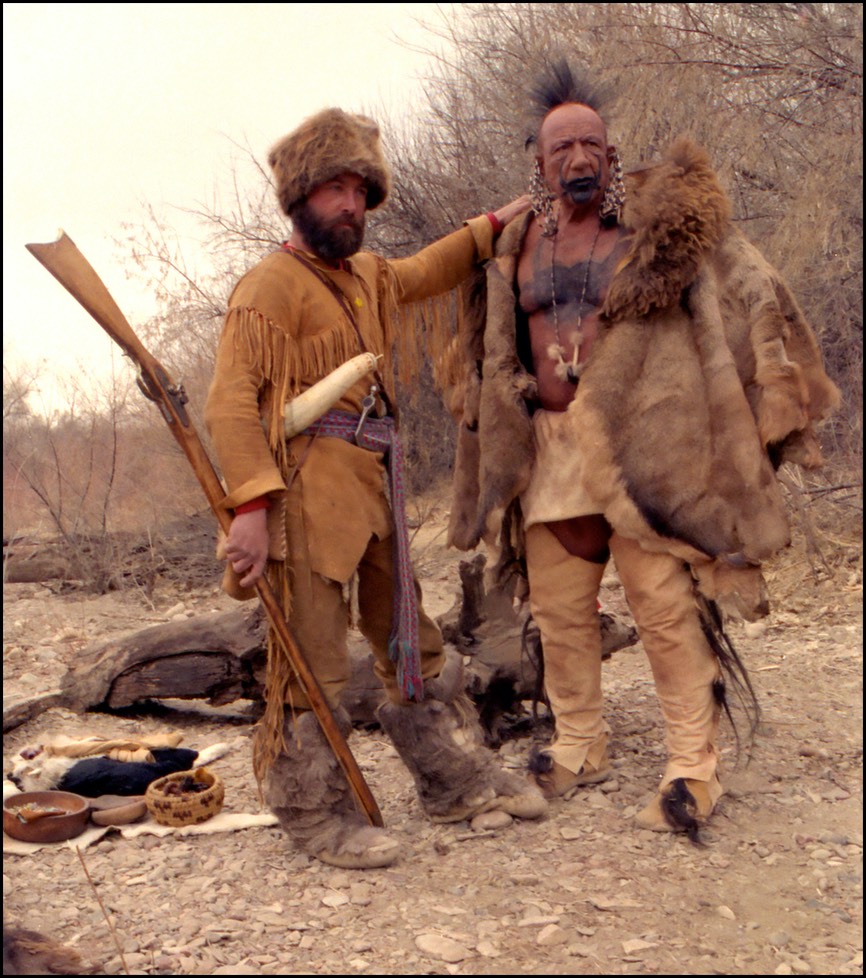
—————————————————
As seen on Rocky Mountain PBS.
—————————————————
"Cinema buffs, history enthusiasts, and anyone who loves adventure will want to see this exciting movie."
Colorado Historical Society
—————————————————
"Zebulon Pike and the Blue Mountain" is an excellent film, well acted, artistically photographed and professionally produced. I would recommend it to all."
Pueblo Chieftain
—————————————————
A John Henry Johnson Film
Tamarack Productions, Incorporated
Starring Chad Stevens as Zebulon Montgomery Pike
with
Rick Zinanti - Doctor John Robinson
Les Breaux - Antoine F. Baronet “Baroney" Vasquez
John Blackman - Sergeant William Meek
Tom Eden - Corporal Jerimiah Jackson
Kevin Fern - Private Theodore Miller
Ken Renoux - Private John Brown
Mark Haver - Private John Sparks
Scott Moore - Private Thomas Dougherty
Bruce Satoe - Private William Gordon
Larry Lovato - Private Alexander Roy
John Mathis - Private Jacob Carter
Ted Bates - Private Freegift Stout
Bobby Richardson - Private John Mountjoy
Tom Massman - Private Hugh Menaugh
Harry Oles - Private Patrick Smith
Boat Soldiers
Lieutenant James Wilkinson - Frank Garcia, Private John Boley - Marty Bechina, Private Samuel Bradley - Joseph Kronwitter, Private Solomon Huddleston - Todd Mead, Private John Wilson - John Eden, Sergeant Joseph Ballenger - Jim Halvorson
General James Wilkinson - Al J. Boggs
Clarrisa Pike - Tammie Stevens
Spanish Dragoon - Louis A. Spera
Pueblo Indian - John Romero
Secretary Dearborn’s Voice - Rodney D. Townley
Osage Indians
Chief - Rick Fernandez
Guides - Edward Lazo, Edward Frausto
Pawnee Indians
Chief Buffalo Bull - Ken Stanelle
Young Chief - J.B. Shasteen
Pawnee Warriors
John LeFebre, Ed Sanchez, Alfredo Avila, Alex Balderrama, Steve Herrera, Anthony LeFebre, Sam Lindblad, Frankie Martinez, Dave Romero, Sam Romero, Moses Segura, Paul Segura, Marcos Soto, Jared Aragon, Mike Carner, Ron Fagan, Ken Garcia, Henry LeFebre, Henry LeFebre Jr., Francisco Leon, Nick Sisneros, Fred Romero, Arnold Stand, John Salcedo, Mark Segura
—————————————————
Written, Directed, Photographed & Edited by John H. Johnson
Executive Producer - Larry Birch
Associate Producer - Frederick J. Stobart
Narrator - Burgess Meredith
Assistant Director/Editor & Makeup/Sound - Bryan Sisson
Costume Designer/Continuity - Carol Cartmell
Horses, Saddles & Tack - Katherine Keating, Capt. USN (Ret)
Music Composed and Conducted - Neil Argo
Assistant Cameraman - John Romero
Casting/Production Assistant - Pat Erickson
Linguist/Indian Coordinator - Jim Halvorson
Armorer - Frank Rodacy
Indian Props - Joseph D. Pachak & Dave Griffeths
Assistant Makeup/Hair - Catherine Rodriquez
Photographer - Mark LeMieux
Artist - Tim Acosta
Equipment Engineering - Vincent Holt
And the help of countless others who love the rich history of the West.
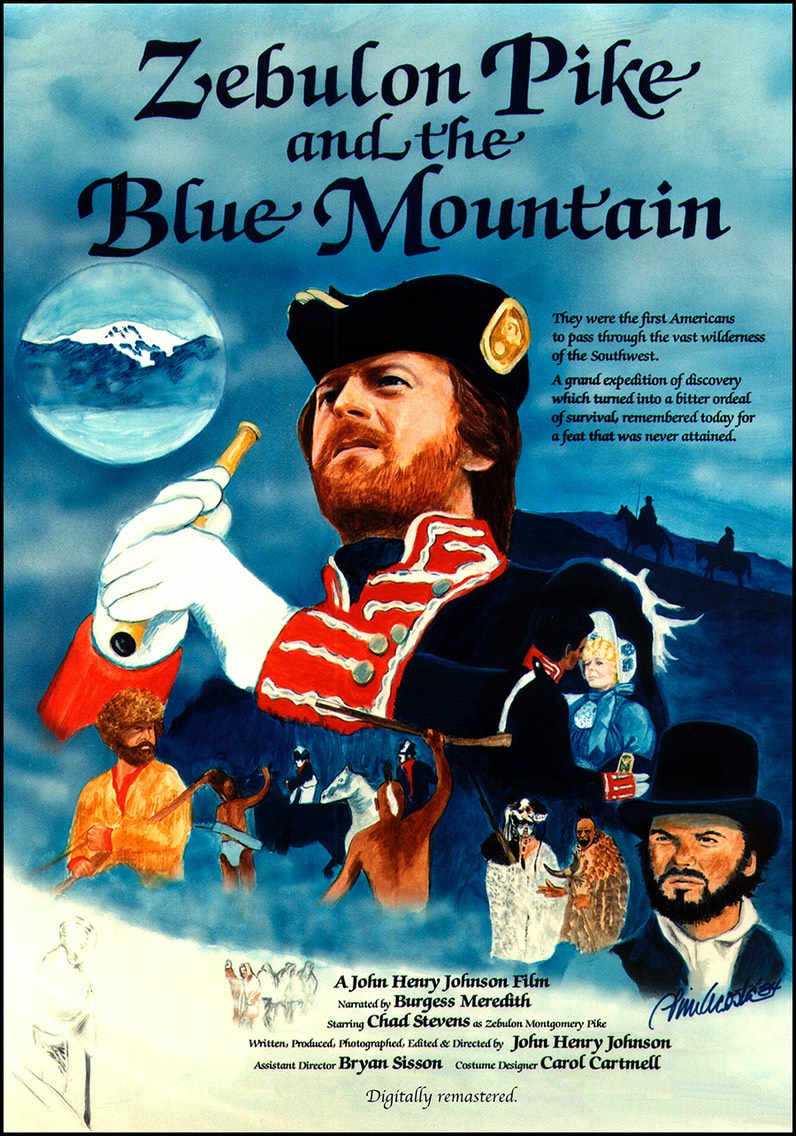
Pike wanted to be remembered as a great military man, little did he know that he would instead gain the fame he sought because of his attempt to climb a western mountain.
—————————————————
The “Zebulon Pike and the Blue Mountain" DVD is available for purchase at:
Pueblo Heritage Center 201 West B Street located in the Union Avenue Historic District. (719) 295-1517
Beulah Historical Society Museum located at 8505 Hwy. 78, “the fork in the road” at the base of Beulah hill as you enter the beautiful valley of Beulah, Colorado. (719) 485-1976
Part of the purchase price will go to these wonderful museums.
Also available at John Deaux Gallery 221 S. Union Avenue, Pueblo. (719) 545-8407
Or you can purchase a copy below for $25.00, plus a $5.00 shipping/handling fee.
We ship internationally too. For international orders, pay as usual and then email me your address. I will find what additional amount is needed and let you know, which you can then pay separately through PayPal.
—————————————————
You can use PayPal, your debit or credit card.
For bulk or special orders please email me at tamarackprod@mac.com.
—————————————————
Other websites on another film and book by John Henry Johnson:
The book “Buddy Johnson A Colorado Original” about his father, a pioneer Colorado broadcaster and bandleader and performer for four decades. buddyjohnson.net
The DVD “Damon Runyon’s Pueblo” about the famous New York writer’s Colorado roots and experiences in the frontier era West. damon-runyon.com